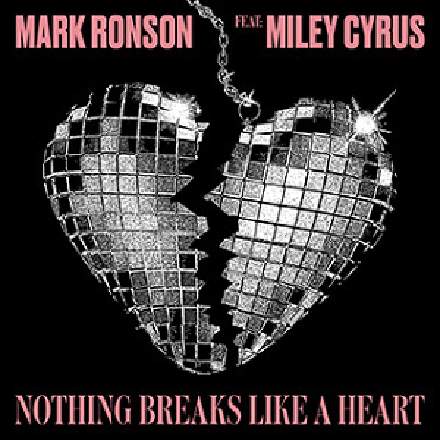
Poor old Miley — no matter what she does, I never seem to be able to find it in my heart to take her seriously. Where 'Wrecking Ball' came off like discount P!nk, this latest stylistic foray feels like she’s pitching for a slice of Lady Gaga’s recent singer-songwriter reinvention (in which Ronson also had a hand). Convenient, then, that a trace of her native Tennessee twang suddenly appears to be emerging from behind the Malibu facade that has concealed it for so many years. Don’t blink, though, because I’m not sure how long it’ll last…
Anyway, I like the way this production plays with the lengths of the different song sections. So, for instance, the chorus develops from the beatless eight-bar fragment at 0:08 into the first full 16-bar statement at 0:55. Then, by expanding the final four-bar segment with various internal repetitions, we get the 22-bar choruses at 1:54 and 2:48, the latter continuing its four-to-the-floor pattern for four bars longer. The first prechorus also increases its length from two bars at 0:50 to four bars at 1:45 and 2:40. All of this makes sense, in terms of maximising the impact of the chorus melody and the prechorus’s “nothin’ goin’ save us now” riff. Likewise, the shortening of verse 2 to eight bars also stands to reason, as the lead vocal inevitably won’t hold the listener’s interest as well as it did in verse 1, and this truncation also means that the choruses progressively get closer to each other as the song progresses: there are 14 bars between the first two choruses; only 12 bars between choruses 2 and 3; and only four bars between choruses 3 and 4.
You often hear mix engineers using momentary delay ‘spins’ as ear candy, but you don’t often hear reverb employed in this way nowadays, so I was pleased to hear the sudden extra bloom on the repeated vocal phrases at the end of each four-bar verse segment (eg. “we both know it” at 0:31 and “it’s blowin’” at 1:34), as well as on the first prechorus’s “us now” (0:52). What elevates this trick further, though, is that the same kind of reverb also swathes the hummed backing-vocal countermelody at the tail end of the chorus (first heard at 1:21), so the idea in general feels more ‘built in’ than ‘stuck on’, if you see what I mean. Oh, and before you go, don’t miss the lovely little reverse-guitar layer at 1:06.










